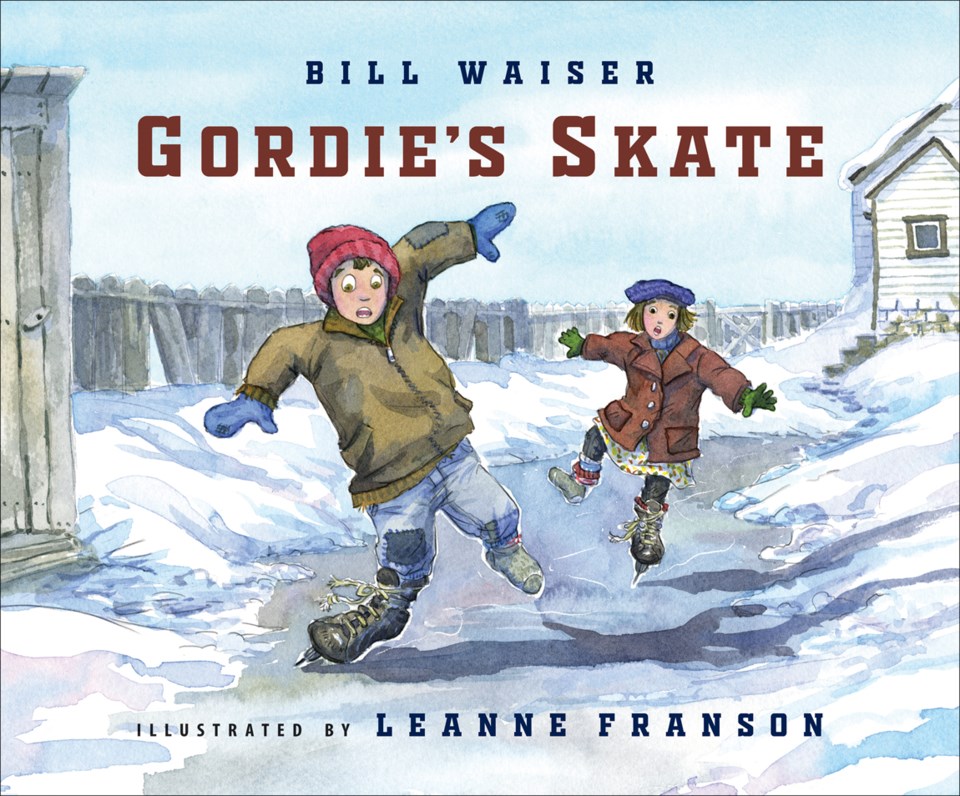YORKTON - SASKATOON - In terms of Saskatchewan sport no name is more iconic than Gordie Howe.
For those of us of a certain age – grey hair a likely sign – he is the greatest hockey player ever.
I have never been a fan of the Detroit Red Wings, and evolved to the point I barely pay attention to non-Canadian-based teams – by the way who is winning the Stanley Cup finals? – I was always a Howe fan.
I recall in Grade 7, we are talking many, many years ago having to do a speech in class, and my topic was Howe. There was so much to tell classmates about in terms of Howe’s NHL career, and he would play several more seasons following, as I recall my excellent speech.
But for many Howe is as much myth and hockey star. He played his final NHL game as a Hartford Whaler in 1980. He was 52 that season and appeared in 80 games and had 41 points, which really tells you just how exceptional Howe was.
So while I was aware of the greatness it was surprising to see a recently released children’s book from Thistledown Press in Saskatoon was about Gordie Howe.
The book arrived and it is such a delight even though I am well past being a child.
In Gordie’s Skate, by Bill Waiser, tells the story of how Howe got his first skate – eventually he would get two – and how that set him on his path to greatness.
Waiser writes:
At the first signs of winter – bare branches, frosty mornings, a few lazy snowflakes – Gordie Howe would get excited.
Winter meant skating and hockey.
Gordie had one passion: playing hockey.
He would have played all day and night if he could ... even in his sleep.
To him, it was as natural as walking.
“Gordie's Skate was inspired by Howe's autobiography Mr. Hockey: My Story (2014) and his memories of growing up in Saskatoon during the 1930s,” notes Waiser in an author’s note on the book. “The story about Gordie's mom buying the sack with the old pair of men's skates has been regularly featured in newspaper stories about Howe. Her kindness resonated with me, reminding me of my own parents who came of age during the depression and who taught me the importance of helping others.”
What is unusual here is that Waiser is a noted writer of history, and while there is a thread of history here, the medium of a children’s book is different.
“I deal in stories,” said Waiser in a recent interview with Yorkton This Week. “I use a lot of stories in my writing to connect with people.”
In the case of the children’s book he said the kernel of a story about Howe’s first skate was one he had seen on more than one occasion and it finally became a children’s book idea.
“It’s a different type of challenge,” said Waiser, adding you write differently for children but you are still telling a story too. “. . . It was a lot of fun.”
There are important themes in the book, added Waiser, elements such as Howe’s perseverance to become a player, and the kindness of his mother helping a neighbour which ultimately led to the first skates.
A children’s book also typically needs illustrations, in this case the artist is Leanne Franson from Martensville.
Waiser said Franson provided some “draft sketches that we liked” and from there they knew she was the one to make the book visually appealing – a key in attracting attention to the buyers of children’s books.
So for younger readers, a bit about Howe from Waiser’s author notes; “Gordie Howe (1928-2016), was just eighteen years old when he began his National Hockey League career with the Detroit Red Wings in 1946. He would help lead the Red Wings to four Stanley Cups (1950, 1952, 1954 and 1955). During his twenty-five seasons with Detroit, Gordie would be named the NHL's most valuable player (the Hart Memorial Trophy) six times. He also once held the NHL record for most goals and most points. Howe was inducted into the Hockey Hall of Fame in 1972, but came out of retirement two years later to play with his sons on the Houston Aeros in the new World Hockey Association. He spent his last season with the NHL's Hartford Whalers in 1979-80. When Gordie finally hung up his skates, he had played professional hockey in five decades. It's little wonder that he was affectionately called, ‘Mr. Hockey’.”
This is a book many grandparent hockey fans are likely to purchase for grandchildren.
“I hope so,” admitted Waiser, adding the response to both his and Thistledown’s first children’s book has been positive.

